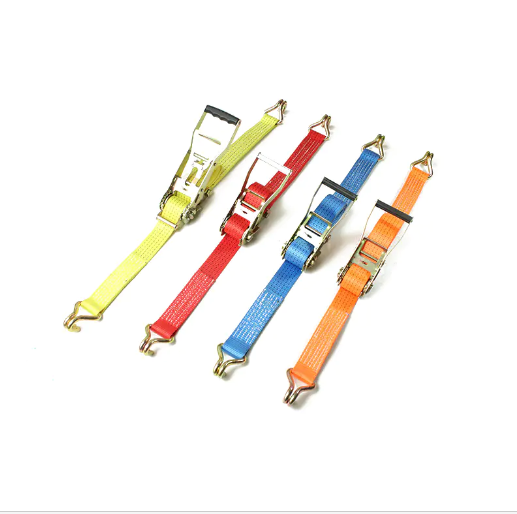Cat:1Inch Metal Ratchet Buckle
A 1-inch 25mm metal ratchet buckle is a type of buckle that is 1 inch in 25mm width and made of metal. It is commonly used for securing and tie down s...
See Details
Tie-down straps are used to secure and tighten items during transport. Tie-down straps are typically made of durable materials such as nylon or polyester and feature a buckle or ratchet mechanism for tightening and securing the straps.
Tie-down straps are widely used in industries such as construction, logistics, and outdoor sports.
Cam buckle straps feature quick-release buckles for easy adjustment and tightening. Ratchet straps feature a mechanism that precisely tightens and locks the straps. Bungee straps, on the other hand, are elastic straps with hooks on both ends, allowing for quick and flexible securing of lightweight items.
Tie-down straps (or tie-down straps) typically require replacement based on their physical condition, functional failure, or safety risks. Understanding the key signs that tie-down straps need replacement can help ensure the safety of transported goods.
Breakage or Cracks
The straps may show visible cracks, breaks, or partial disintegration, resulting in a loss of their binding capacity.
Causes: Long-term fatigue, material aging, or external impact.
Deformation or Looseness
The strap is twisted or stretched, or the locking mechanism cannot maintain tension (e.g., the strapping machine's strapping ring ejects abnormally).
Symptoms: Looseness after bundling, shifting or shaking of items.
Corrosion and Wear
Rust on metal strapping (especially in humid environments), and powdering and brittleness on the surface of plastic strapping.
Rough, worn edges of strapping can cut cables or operators.
Locking Mechanism Failure
Failure of buckles, grooves, or adhesives, leading to repeated slippage or inability to secure.
Example: Slippage caused by groove wear during elevator strapping.
Abnormal Tension
The equipment indicates excessive or insufficient tension (e.g., a strapping machine displays "Abnormal Strap Voltage Value").
Manual strapping feels noticeably loose, requiring multiple repetitions.
Degraded Bundling Quality
Cable bundles become dislocated (e.g., cable bundle spacing within a cabinet >200 mm), or loose bundles are seen during transport.
Electrical Safety Hazards
When used for cable management, damaged strapping may scratch the insulation layer, causing short circuits or leakage (must comply with GB/T 28567-2022 Safety Requirements for Electrical Wiring Equipment).
Equipment Operation Risks
Industrial equipment (such as automatic strapping machines) may cause strap jams and malfunctions due to substandard strapping thickness (less than 0.4 mm) or incorrect width (outside the 5-12 mm range).
Failure of elevator steel strapping may trigger emergency braking.
Loss of Environmental Adaptability
Plastic strapping softens in high-temperature environments (>75°C) and cracks in low-temperature environments, requiring replacement with weather-resistant material.